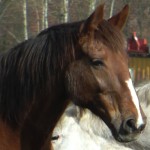 She’s back! The lady’s back in town and isn’t she just turning heads? Pretty, upright, light on her feet and a spring in her stride, whose head couldn’t she turn? The blind? They’d be deafened by her silence. The deaf? They’d be blinded by her beauty. Missed her, fellows? Just fall into line. Worried, girls? Don’t be. Her interests are as seasonal as yours. The lady’s back, back in town. And she’s alert, alive and ready to jive.
She’s back! The lady’s back in town and isn’t she just turning heads? Pretty, upright, light on her feet and a spring in her stride, whose head couldn’t she turn? The blind? They’d be deafened by her silence. The deaf? They’d be blinded by her beauty. Missed her, fellows? Just fall into line. Worried, girls? Don’t be. Her interests are as seasonal as yours. The lady’s back, back in town. And she’s alert, alive and ready to jive.
Back in record time
Yes, she is back in town as it were, my Pip, and she is back in record time. Who would have thought it? A short way into October last year it was, when my beautiful chestnut mare suffered a tendon blowout, collapsing her world and mine into a crushing sense of darkness and despair, or so it seemed to me at the time.
And now, just over five months later, Pip has made such a spectacular recovery, that I have returned her to the herd. To be really honest with you, her recovery actually occurred much earlier. The vet came round in the third week of January to conduct another sonar scan. Based on what he saw, he was quite unequivocal: Pip was fit enough to return to the herd.
Mud, glorious mud
Naturally, I was absolutely amazed. In slightly less than four months conventional medical science was giving Pip the green light to return to a relatively high-risk situation, “high-risk” that is, in terms of tendon injuries. Wow, what I had been doing with her every single day, had paid off!
Vicki was the realistic one. She looked at the herd enclosure and then glanced at me, shaking her pretty, blonde head. No, nyet, non, nada! I followed her gaze, reluctantly I might add, for the truth was strikingly evident, so much so that I really wanted nothing other than to bury my head in the sand and ignore it. Here, there and seemingly everywhere there was water in the herd enclosure and mud, glorious mud. Well, actually not so glorious, it was thick and it was deep, the kind that sucks the hoof deep into the earth and holds onto it, yes, that’s it, the kind that is a potential terminator of tendons in the equine lower leg. Did I really want Pip thrown to her wits in that? The short answer was “No”. Interestingly enough, that was also the long answer.
Bicep-building
You’ve got to love them … Dutch winters … especially the kind that are just above freezing point and are accompanied by rain, lots of it, and wind, even more of it. A scintillating combination … if you are keen on experiencing the equivalent of climatological waterboarding. (Don’t you just love the way George W. Bush and fellow patriots have given us a new metaphor? I last came across it when the new Greek Minister of Finance, Yanis Varoufakis, referred to the German-led austerity programme in the EU as “fiscal waterboarding”, and judging by the effects on ordinary people – and not just in Greece, mind you – he may be right.)
Being in the middle of one of those winters as I was contemplating Pip’s fate, which I held in my cold, wet palms, I reconsidered the matter and simply had to concede that Vicki was right. So enthusiasm yielded to reason and I embarked upon the equivalent of a bicep-building programme. Every day I took Pip for a walk in the forest, which included increasingly longer bursts of trot. This time I was wise though. Instead of fewer, longer intervals of trot, I opted for shorter but more frequent ones. As a result, my own muscles held up and I could keep pace with Pip. And so a month passed and a dry spell began. In the middle of that we went to Spain and upon our return it was clear that my mare was ready to hit the town, and so she did.
The secret
So what is the secret? What has made it possible to return Pip to the herd within four to five months after sustaining a severe tendon injury, whereas some horses need six to twelve months to recover? What role did conventional medicine play? An important one actually, in terms of diagnosis at least. The sonar scans were particularly informative in that they enabled me to track Pip’s progress. Apart from that was there any procedure or medication which facilitated her recovery?
Conventional medicine’s sole curative contribution came very early in the game before a sonar scan confirmed the diagnosis, and it came in the form of an excessively large, plastic bottle of some expensive green, slimy gel with a five-syllable, unpronounceable name which I was required to apply to Pip’s blown tendon every single day until a little after the diagnosis, the volume of which was so vast that the bulk of it remained unused. Absolutely no change was evident. So I was left to draw dubious satisfaction from the fact that I had made a modest contribution to some drug company executive’s strenuous ability to make ends meet, where such ends take the form of matching income to expenses which rival those of an impoverished Third World nation state.
So stop being so secretive, you may exclaim. What is the secret? First and foremost, it is movement, albeit highly regulated and increasing in frequency and extent. In addition, as mentioned in previous posts, I applied red light therapy every day for a period of three to four weeks at a time with a break of about a week in between. In addition, and this really is a major part of the secret as far as I am concerned, I performed Equine Touch with Pip at least once every week and frequently more than once, if I felt the need to address more areas of concern. Does it work? You tell me. Watch the video and decide for yourself.
Oops
There always seems to be an “oops” moment, doesn’t there? You think you’ve done all the miles and have finally made it when all of a sudden you spot it, the kind of thing that makes your tummy lurch and your throat dry. Pip and I have had a few of those moments and we weren’t about to be spared another.
There it was, the decided unevenness in the trot, too much weight on the left foreleg and not stepping through with it. So the problem had to be in the right foreleg. Not the tendon. Please don’t let it be the tendon. Not now. Not ever.
Fortunately, it wasn’t. Pip’s weaker right forehoof was feeling the strain of a massive increase in movement as a result of her release into the herd enclosure, in which she can move around at will and also involuntarily when other horses require that she do so. In addition, the surface in the herd enclosure is much harder in the high-traffic parts. Both factors had clearly conspired to challenge Pip’s improved but still significantly less developed right forehoof.
Tendon injury benefits
Bet you’re scratching your head or at least shaking it as you empathise with someone who could be so deranged as to contemplate the prospect of a tendon injury yielding benefits. The concept is paradoxical, is it not? Yet is it not like the silver lining adorning the proverbial cloud?
When I look back on the five months and a bit which have brought us this far, I am aware that I already became conscious of potential benefits generated by Pip’s tendon injury at a fairly early stage. It was clear to me that her isolation from physical interaction with the herd would require her to draw on her own inner resources to become more emotionally self-reliant and independent in relation to other horses in general and her friend, Anaïs, in particular. This has materialised and the proof is evident in the ease with which she leaves Anaïs’ side to accompany me on our walks.
Related to this is Pip’s tendency towards anxiety or should I say “was”, although it took a long time before any major change became visible. Indeed, it was only during the last fortnight before our trip to Spain, that I noticed a huge change in her behaviour. Whereas she had invariably exhibited a period of nervous pacing and had usually declined to nibble from the huge pile of hay in front of her when I was applying the red light therapy until then, during the second last week of her treatment she suddenly calmed down in the pen and set about munching her hay as though it was the most normal behaviour to be expected of her. The change was so sudden as to be striking: one moment I used to have an anxious mare. Now no more. I put this down to the trust that has been nurtured in her by my daily care, although it is also probably due to another major benefit that I have noticed.
Pip returning to the herd after her recovery from a tendon injury
Klaus Ferdinand Hempfling stresses the importance of leading as a precursor to any meaningful action with a horse and it is precisely this type of activity which has been demanded of me in the course of Pip’s convalescence every single day after the initial period of prescribed inactivity. As in the past with Anaïs, the walks with Pip became a form of active meditation and I found myself becoming increasingly sensitive to her presence and movement while relating my energy to hers and then playing with it to elicit a subtle interaction with her as we moved through the forest side-by-side. The effect was profound to the point where it has become possible to sense an impending action on the part of my mare a split second before it occurs but only provided that I am fully present in the moment with her. I also find that she responds to the gentlest of requests when I achieve this, on some occasions even if they are only voiced in the absence of any overt gesture. And none of the responses have been trained. I can only conclude that the combination of presence and intent generates a specific type of energy within me to which she is highly sensitive.
The next step
As we move into spring the land is drying out and, as it does so, it is hardening, as are the horses’ hooves, so too Pip’s. While the earth blossoms and the skies shriek with new life, I am taking my mare for long walks in the forest every single day but without asking her to trot. We have been doing this for a week now and I anticipate that within the next few days her right forehoof will be strong enough to resume trotting.
In the meantime Vicki and I have begun to wake up to a new perception of our reality. For some time now we have known (intuitively as opposed to scientifically) that we have been moving towards another major step in our lives, although we have been at a loss to define it. Now its contours are rising up in front of us like apparitions emerging from a fog. The next step is almost upon us and it is big. Stay tuned!
Horses and Humans on Facebook
May I remind you that we now have a Horses and Humans group on Facebook. If you would like to leave a comment, you can do so on this blog or on the the Horses and Humans Facebook group page. All new posts will feature on that page along with additional content posted by any of our members. Please feel free to join us at:
https://www.facebook.com/groups/horsesandhumans/
There is also a Horses and Humans publications page, which contains information concerning the publications released under the Horses and Humans imprint. Some of those publications will be free of charge. You will find it here:
https://www.facebook.com/horsesandhumans
I also have a Facebook page through which you may contact me. You will find it at:
https://www.facebook.com/andrewglynsmail
Equine Touch
Our Equine Touch business is calleed Humans for Horses, you can find our website at:
http://www.humansforhorses.com/
and our Facebook page at:
https://www.facebook.com/Humans.for.Horses
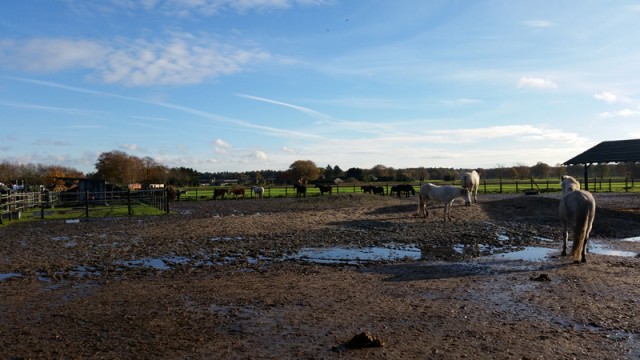
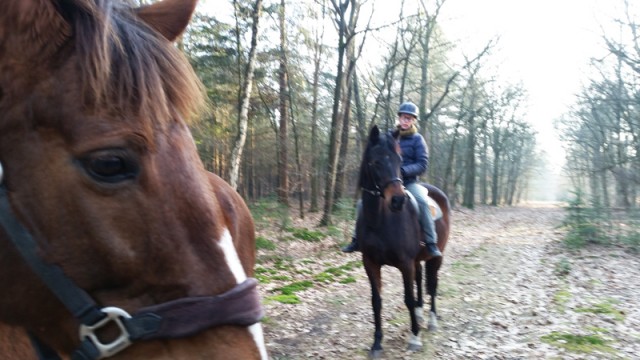

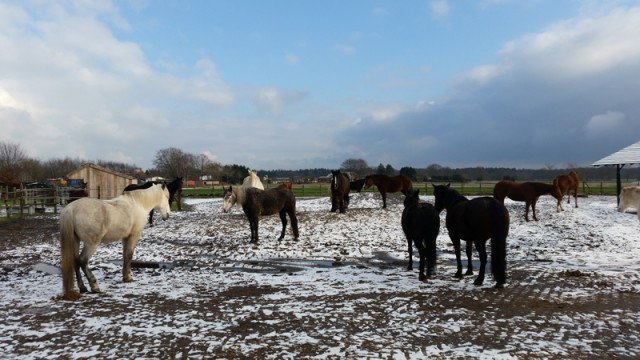

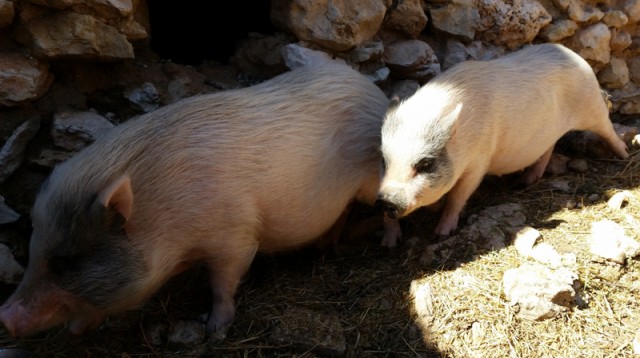



Hi, Andrew, I’m very happy for Pip’s fast recovery. Your dedication to her with red light therapy and equine touch must have contributed a lot her rapid recovery as you mentioned. Amazing therapy. I don’t know which red light you used, I have two different red lights that I’ve hardly tried on my Frisian mare who has an arthritis. I tried to use Tellington touch but since she is far from my home, it’s impossible to continue everyday. I’m also glad you listen to Vicki for not leaving her with the herd on muddy ground too soon. I also nearly fell being caught by deep mud at Ecurie when I went to pick up my horses. Not only where you live, it was also bad here where I live. Fortunately I spent a Christmas and New Year with my son and his family in Hong Kong and with my daughter and her Family in Japan, weather was gorgeous. But then as soon as I was back in Paris, I was depressed.
Anyway, congratulations for Pip’s early recovery!!!
I’ve got back my facebook account again forced by my horse friends. I just have to be very careful this time not to accept anyone even they are friends’ friends…